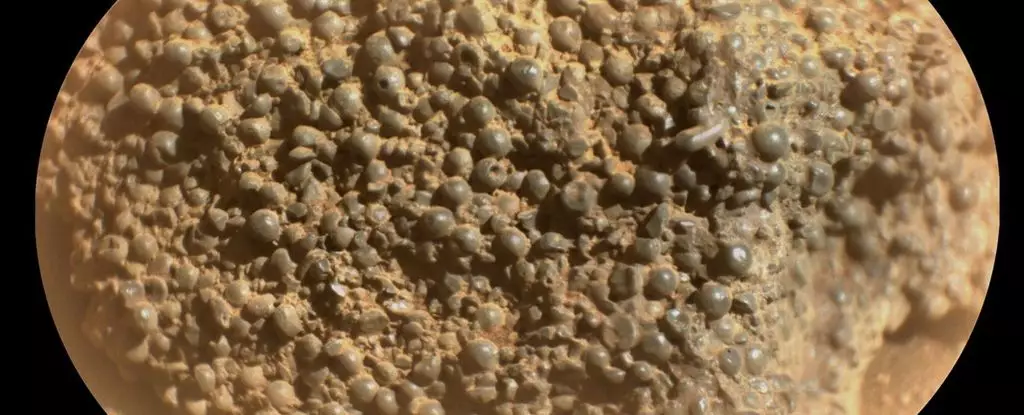Mars continues to astonish scientists and enthusiasts alike with its geological curiosities, particularly the newly discovered rock formation known as St. Pauls Bay. Encountered by the Perseverance rover as it explored the landscape of Broom Point, this peculiar rock captures the imagination with its unusual appearance, reminiscent of bubbly frogspawn. Its surface is dotted with numerous dark gray spherules, each measuring roughly a millimeter across, clumping together in an arrangement that defies previous geological expectations. Such discoveries add yet another layer of complexity to our advancing knowledge of the Martian environment.
The Uncharted Territory of Martian Materials
The unexpected nature of St. Pauls Bay raises critical questions about Martian geology and the processes shaping the planet’s surface. Unlike terrestrial formations known as botryoidal structures—where clusters of crystalline minerals form through well-understood mechanisms—the origin and composition of St. Pauls Bay remain elusive. Although researchers have recognized similar spherules in other Martian locales, such as the famous ‘blueberries’ in Gale Crater, the precise origin of St. Pauls Bay is still shrouded in mystery. The distinctions between these formations underscore Mars’s unique geological narrative and challenge our understanding developed from Earth’s contexts.
The Geological Puzzle: Meteorite Impacts or Volcanic Activity?
The question of whether St. Pauls Bay formed through volcanic activity or was a product of rapid cooling post-meteorite impact adds an intriguing dimension to the study. On Earth, these processes lead to similar spherical structures, yet Mars’s conditions differ significantly. The rover’s inability to determine the rock’s formation mechanism stems from St. Pauls Bay being classified as a float rock. Essentially, it has been displaced from its original geological context, complicating efforts to ascertain how it came into existence.
However, orbital observations hint at a nearby dark layer of rock that may hold clues to St. Pauls Bay’s origins. If Perseverance can maneuver closer, we may uncover more about the rock’s journey, offering insights into the environmental conditions that allowed for its formation.
Water’s Influence in Martian Geology
Moreover, the tantalizing possibility that water played a role in the formation of St. Pauls Bay begs further exploration. Previous discoveries of spherules and formations suggest that water may have catalyzed numerous geological processes on Mars. While the existence of liquid water on the planet’s surface is still a topic of debate, the evidence of aqueous interaction cannot be dismissed. The relatively recent findings of bubbly “popcorn” rocks and aqueous concretions lend credence to the argument that water corrections may underpin the Martian landscape’s evolution, potentially aligning St. Pauls Bay with similar formations observed by the Curiosity rover.
As we delve deeper into Mars’s geological history, the unique characteristics of St. Pauls Bay emphasize the importance of continued exploration. Every rock we analyze serves as a page in the evolving story of Mars, inviting us to rethink and refine our understanding of the cosmos and our place within it.


Leave a Reply